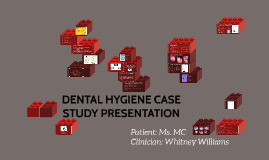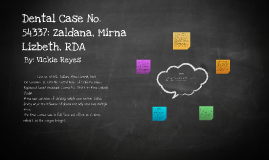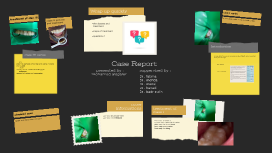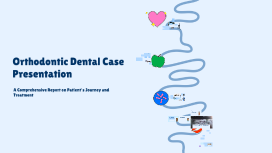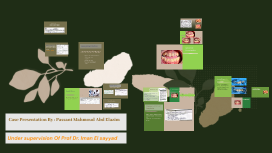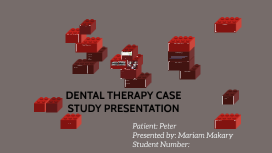Dental Hygiene Case Presentation
Transcript: DH: many restorations Major learning moment: get a completion check! Success: Completed patient HH: High BP, allergies (seasonal, processed meats), melanoma (right leg, removed 1994) Occlusion: class I bilateral, with a class II tendency from a canine relation. 4mm overjet, with a moderate overbite Subjective/Objective Implementation Treatment Planning IO/EO: WNL, bilateral linea alba, bilateral mandibular tori, exostosis near #20 and #21 Analysis Difficulties: Instrumenting while patient slept Patient was eager to learn about homecare, involved in her treatment and seemed very compliant. Dental Hygiene Case Presentation I learned to value the relationship and trust that is built between a patient and clinician. Through treatment, I was able to show my patient the improving indice scores, and it turn I think she began to trust me more. Appointment 2: HH, vitals, IO/EO, velscope, complete perio maintenance quads 3 and 4, and begin on quads 1 and 2, OHI flossing with recommended floss. Moderate caries risk Difficulties: Patient built calculus quickly Contributing factors: plaque biofilm, existing restorations, medications, and xerostomia. Therapy outcomes: prevent further bone loss, improve plaque biofilm scores, home care, and xerostomia, and reduce the plaque biofilm build up. Constraints: medications and compliance. Process: started on quads 3 and 4 due to heavy supra calculus build up. When patient returned at next appointment, it was all back. Patient Appointment 1: HH, vitals, IO/EO, assessment, nutritional counseling, perio maintenance on quads 3 and 4, OHI brushing. Recommend: Bass method 3 Mos. Perio maintenance interval Modifications: Due to not completing quads 3 and 4 at appointment 1, another appointment was needed. Biotene for patient's xerostomia was also added in. CC: 3 mos. perio maintenance recare Implementation 73.9% Plaque Indice I always tend to look at small details when treating a patient, and through this I was allowed to see how all of the pieces fit together. Gingival Health: Periodontitis Subjective/Objective Vitals: 4/16/14; BP 144/78, P 60, R 18 5/6/14; BP 130/70, P 58, R 16 5/13/14; BP 124/82, P 76, R 18 5/21/14; BP 126/76, P 64, R 16 Success: O'herir for supra calculus removal Med Alert: Allergic to some BP medications ASA:II Plaque indice scores started as 73.9% on 5/6/14, then 68.75% on 5/13/14, finally 56% on 5/21/14. PN: Retired DH Diagnosis: AAP Perio Case Type II, generalized moderate, localized severe in her molars. Self Assessment Appointment 3: HH, vitals, IO/EO, complete perio maintenance quads three and four, coronal polish, and fluoride. OHI with recommended ACT rinse. Subjective/Objective Instrumentation Many restorations 85 year old female 24 teeth present Evaluation






